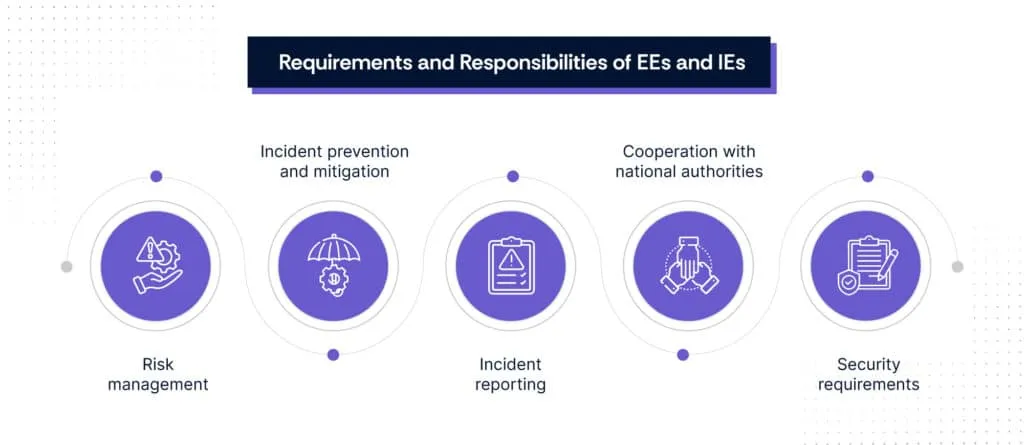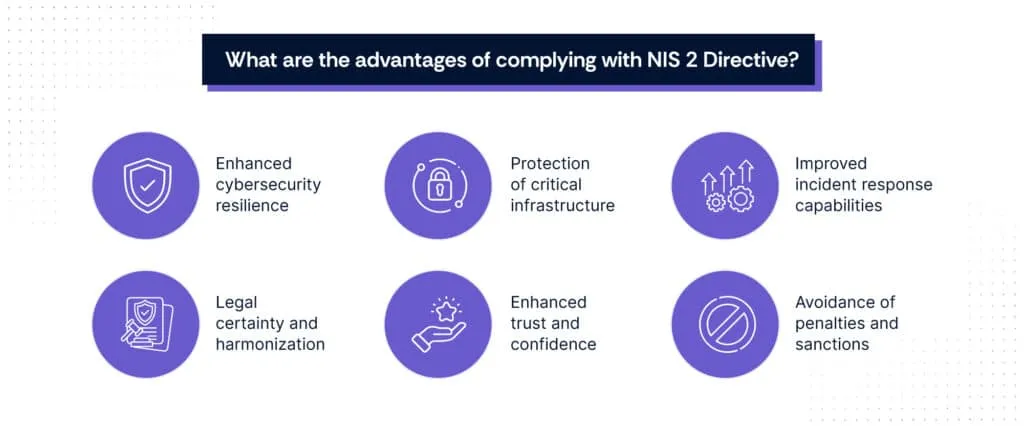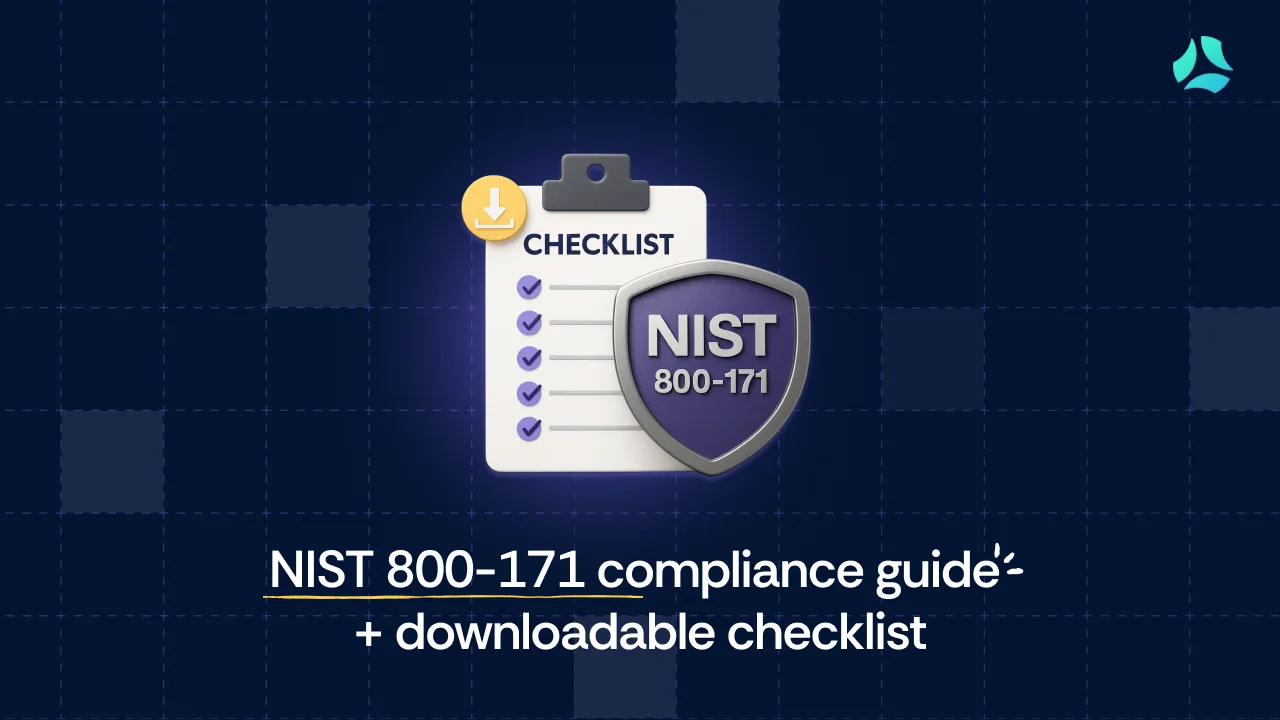Everything you need to know about NIS 2 Directive

NIS 2 builds upon the foundation laid by the NIS 1 Directive. NIS 1 was released in 2016, and it needed upgradation. The necessity to fortify the cybersecurity framework of the European Union in response to changing digital threats and growing dependence on digital services and vital infrastructure gave rise to the NIS 2 Directive. NIS 2 intends to improve incident response capabilities, strengthen the resilience of digital infrastructure and essential services, and encourage greater cooperation among Member States in order to effectively address cyber risks and safeguard EU citizens and businesses in the digital age.
In this blog, we will learn about the NIS 2 Directive, its key provisions, and its implementation.
What is the NIS 2 Directive?
The scope of the NIS 2 Directive encompasses a wide range of sectors, including energy, transport, banking, financial market infrastructures, health, drinking water supply, and digital infrastructure.
The evolution from the NIS 1 Directive to the NIS 2 Directive signifies a significant advancement in the EU’s cybersecurity framework. Key changes include expanding the NIS 2 Directive scope applicability to cover DSPs, imposing stricter obligations on OES and DSPs for risk management and incident reporting, enhancing cooperation mechanisms between Member States, and ensuring flexibility through regular reviews and updates to address evolving cyber threats effectively. Overall, NIS 2 strengthens cybersecurity resilience and protects critical infrastructure and digital services in the EU.
The NIS 2 Directive was published and came into effect on January 16, 2023. Member States have a deadline to transpose the NIS 2 Directive into national law by October 17, 2024. This means that by this deadline, the regulations of the NIS 2 Directive must be incorporated into the national laws of the EU Member States and must be enforced accordingly.
Which organizations are covered by the NIS 2 Directive?
Note:
An entity may still be considered “essential” or “important” even if it does not meet the size criteria in specific cases, such as when it is the sole provider of a critical service for societal or economic activity in a Member State.
OES includes sectors such as energy, transportation, banking, financial market infrastructures, health, drinking water supply, and digital infrastructure.
While DSPs include online marketplaces, online search engines, and cloud computing services.
Key provisions of the NIS 2 Directive
A. Obligations for EEs and IEs

The NIS 2 Directive outlines several obligations for EEs and IEs aimed at enhancing the security and resilience of their networks and information systems. These obligations include:
1. Risk management
EEs and IEs must implement appropriate risk management measures to identify, assess, and mitigate cybersecurity risks to their networks and information systems.
2. Incident prevention and mitigation
EEs and IEs are required to take measures to prevent and mitigate the impact of cybersecurity incidents, including implementing security measures and controls to protect against unauthorized access, disruption, or damage.
3. Incident reporting
EEs and IEs must report significant cybersecurity incidents to the competent national authority within strict timeframes and provide detailed information about the incident, its impact, and the measures taken to address it.
4. Cooperation with national authorities
EEs and IEs are obliged to cooperate with national authorities, including providing relevant information and assistance in responding to cybersecurity incidents and implementing cybersecurity measures.
5. Security requirements
EEs and IEs must comply with specific security requirements set out in the directive, including measures to ensure the security of their networks and information systems, such as encryption, access controls, and monitoring mechanisms.
B. Incident reporting requirements under NIS 2 Directive
Under the NIS 2 Directive, incident reporting requirements are established to ensure a timely and effective response to cybersecurity incidents. The key aspects of incident reporting include:

C. Cooperation and information-sharing mechanisms
The NIS 2 Directive emphasizes the importance of cooperation and information-sharing mechanisms to enhance cybersecurity resilience across the European Union. Key aspects of cooperation and information-sharing include:
1. Cooperation between Member States
The directive establishes mechanisms for cooperation between Member States to exchange information, coordinate responses to cyber threats, and share best practices. This cooperation enables Member States to collaborate effectively in addressing cross-border cyber incidents and enhancing cybersecurity resilience at the EU level.
2. National cooperation networks
Member States are required to establish national cooperation networks comprising relevant authorities, agencies, and stakeholders involved in cybersecurity. These networks facilitate communication and collaboration within each Member State to ensure a coordinated and cohesive approach to cybersecurity governance and incident response.
3. Information sharing and analysis
The directive promotes the sharing of cybersecurity-related information and analysis between Member States, including threat intelligence, incident reports, and best practices. This information sharing enables timely detection and response to emerging cyber threats and enhances the overall cybersecurity posture of the EU.
4. Cooperation with EU institutions and agencies
The directive encourages cooperation between Member States and EU institutions and agencies, such as the European Union Agency for Cybersecurity (ENISA) and the Computer Emergency Response Team for the EU Institutions, Bodies, and Agencies (CERT-EU). This collaboration strengthens the EU’s collective cybersecurity capabilities and supports the implementation of the directive’s objectives.
Stay tuned for compliance and implementation of the NIS 2 Directive in our next article, “Ready, Set, NIS 2: Tasks to Meet Directive Requirements”.
Benefits of compliance with the NIS 2 Directive

Compliance with the NIS 2 Directive offers several benefits for organizations, Member States, and the European Union as a whole:
1. Enhanced cybersecurity resilience
By adhering to the requirements of the NIS 2 Directive, organizations can strengthen the security and resilience of their networks and information systems. This reduces the risk of cybersecurity incidents and enhances their ability to prevent, detect, and respond to cyber threats effectively.
2. Protection of critical infrastructure
Compliance with the NIS 2 Directive helps protect critical infrastructure and essential services from cyberattacks and disruptions. This ensures the continuity of vital services such as energy, transport, banking, and healthcare, safeguarding the well-being and safety of EU citizens.
3. Improved incident response capabilities
The directive’s incident reporting requirements and cooperation mechanisms enable organizations and national authorities to respond more effectively to cybersecurity incidents. Timely reporting and information sharing facilitate coordinated responses, minimizing the impact of cyber threats on essential services and digital infrastructure.
4. Legal certainty and harmonization
Compliance with the NIS 2 Directive provides organizations with legal certainty by establishing clear cybersecurity requirements and obligations. Harmonization of cybersecurity standards across Member States promotes consistency and interoperability, facilitating cross-border cooperation and trade within the EU.
5. Enhanced trust and confidence
Demonstrating compliance with the NIS 2 Directive enhances trust and confidence among stakeholders, including customers, partners, and investors. It signals a commitment to cybersecurity best practices and a proactive approach to protecting sensitive information and critical assets.
6. Avoidance of penalties and sanctions
Compliance with the NIS 2 Directive helps organizations avoid penalties and sanctions imposed for non-compliance by national authorities. Proactively meeting cybersecurity obligations reduces the risk of financial losses, reputational damage, and legal consequences associated with regulatory violations.
Winding up
In conclusion, the NIS 2 Directive marks a significant advancement in EU cybersecurity, building upon the foundation of NIS 1. It aims to fortify digital infrastructure, enhance incident response capabilities, and promote cooperation among Member States. Key provisions outline obligations for risk management, incident reporting, and cooperation with national authorities.
To ensure seamless compliance with the NIS 2 Directive and bolster your cybersecurity resilience, partner with Scrut today. Our tailored solutions and expertise empower organizations to navigate regulatory complexities efficiently. Contact us now to embark on your journey towards a secure digital future.
FAQs
1. What is the NIS 2 Directive, and how does it differ from the NIS 1 Directive?
The NIS 2 Directive, officially known as Directive (EU) 2022/2555, is a legislative framework enacted by the EU to strengthen cybersecurity resilience. It builds upon the NIS 1 Directive by expanding its scope to include Digital Service Providers (DSPs) and imposing stricter obligations on OESs and DSPs for risk management and incident reporting.
2. Who does the NIS 2 Directive apply to, and what sectors does it encompass?
The NIS 2 Directive applies to EEs and IEs operating within critical sectors such as energy, transport, banking, healthcare, and digital infrastructure. It aims to ensure the protection of essential services and digital infrastructure from cyber threats.
3. What are the incident reporting requirements outlined in the NIS 2 Directive?
EEs and IEs are required to report significant cybersecurity incidents to the competent national authority within specific timeframes. They must provide detailed information about the incident, its impact, and the measures taken to address it.


















